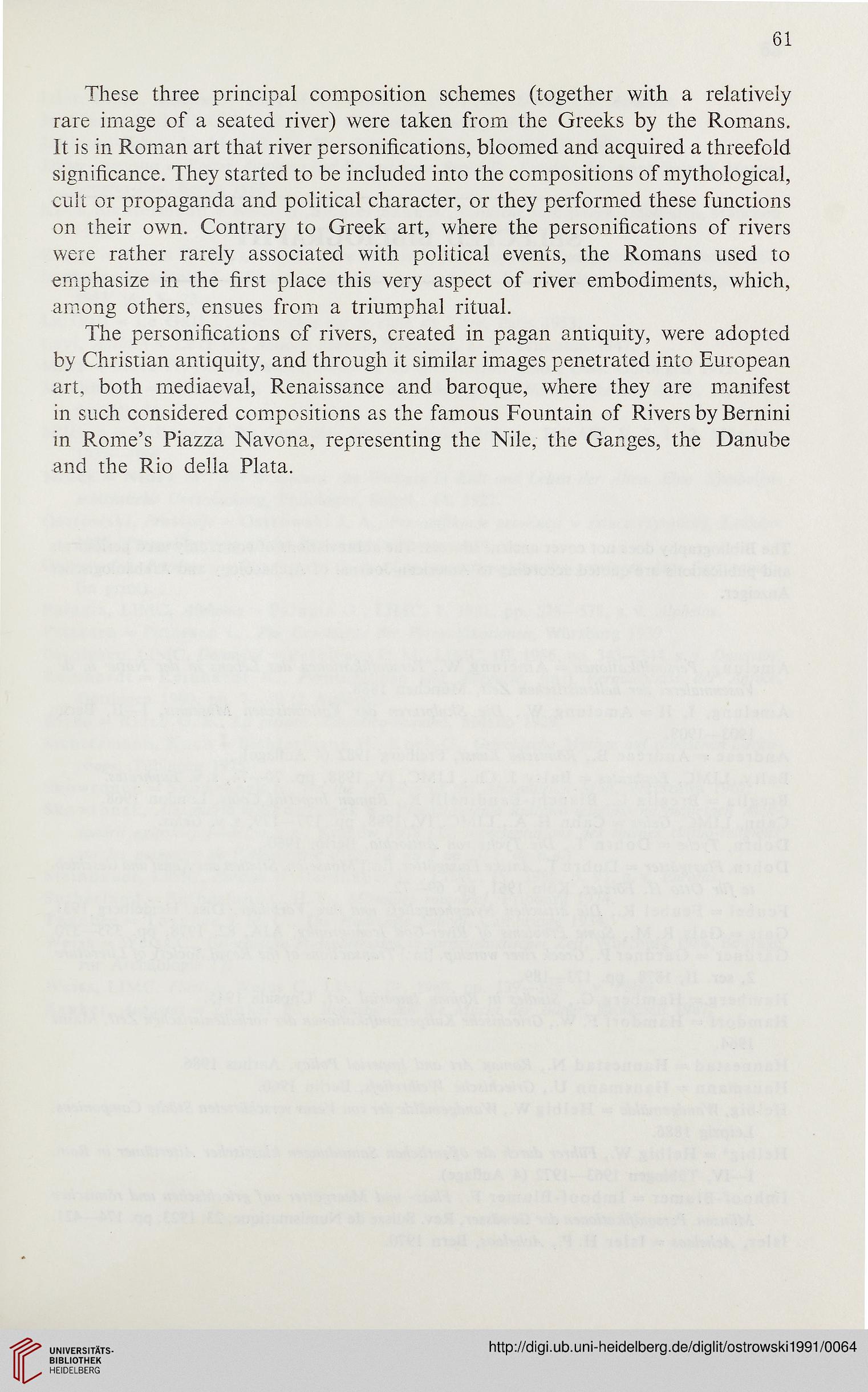61
These three principal composition schemes (together with a relatively
rare image of a seated river) were taken from the Greeks by the Romans.
It is in Roman art that river personifications, bloomed and acquired a threefold
significance. They started to be included into the compositions of mythological,
cult or propaganda and political character, or they performed these functions
on their own. Contrary to Greek art, where the personifications of rivers
were rather rarely associated with political events, the Romans used to
emphasize in the first place this very aspect of river embodiments, which,
among others, ensues from a triumphal ritual.
The personifications of rivers, created in pagan antiquity, were adopted
by Christian antiquity, and through it similar images penetrated into European
art, both mediaeval, Renaissance and baroque, where they are manifest
in such considered compositions as the famous Fountain of Rivers by Bernini
in Rome’s Piazza Navona, representing the Nile, the Ganges, the Danube
and the Rio della Plata.
These three principal composition schemes (together with a relatively
rare image of a seated river) were taken from the Greeks by the Romans.
It is in Roman art that river personifications, bloomed and acquired a threefold
significance. They started to be included into the compositions of mythological,
cult or propaganda and political character, or they performed these functions
on their own. Contrary to Greek art, where the personifications of rivers
were rather rarely associated with political events, the Romans used to
emphasize in the first place this very aspect of river embodiments, which,
among others, ensues from a triumphal ritual.
The personifications of rivers, created in pagan antiquity, were adopted
by Christian antiquity, and through it similar images penetrated into European
art, both mediaeval, Renaissance and baroque, where they are manifest
in such considered compositions as the famous Fountain of Rivers by Bernini
in Rome’s Piazza Navona, representing the Nile, the Ganges, the Danube
and the Rio della Plata.




